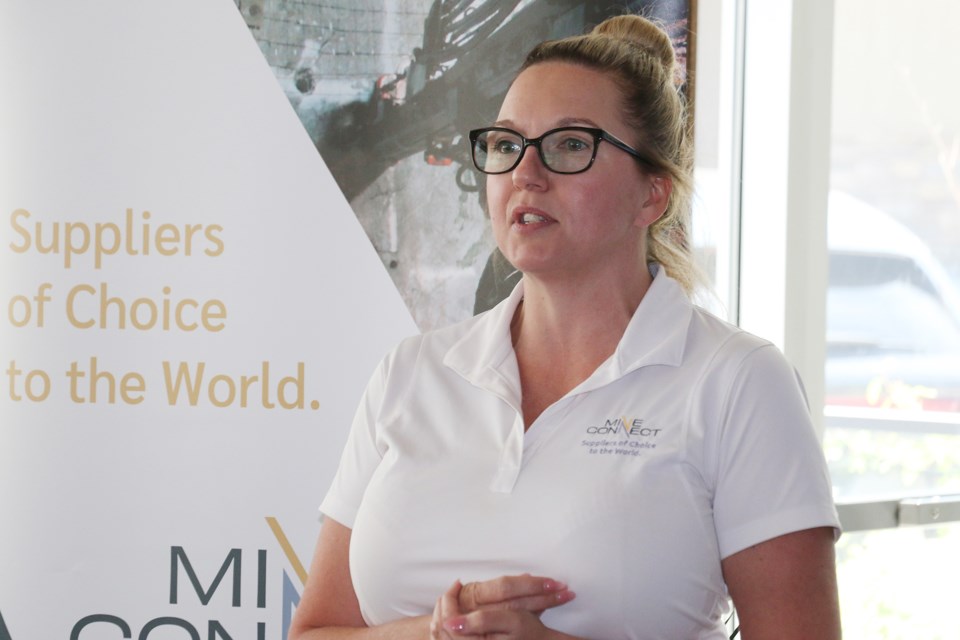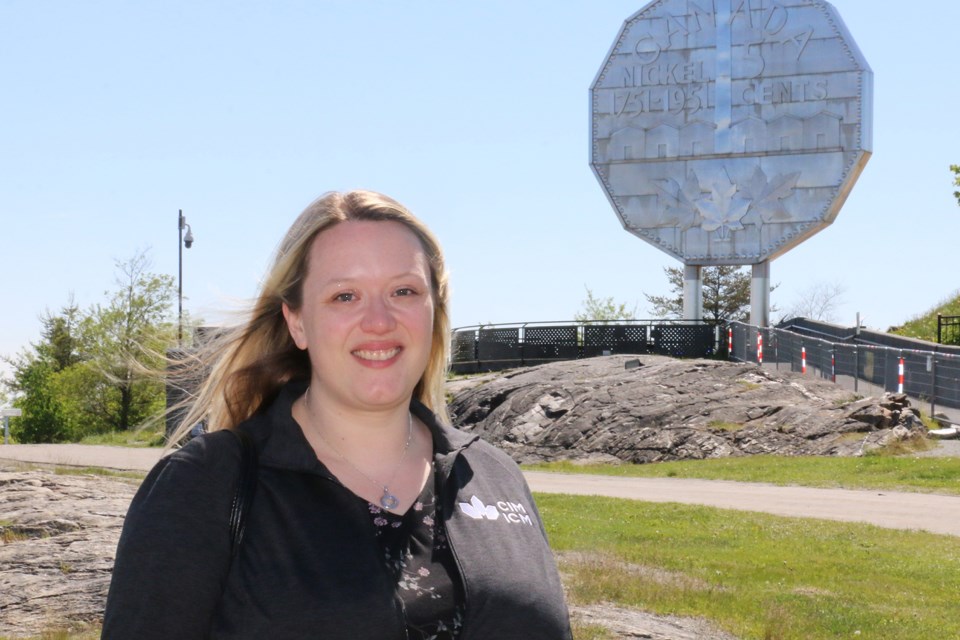The Sudbury-based MineConnect organization showed off during the recent BEV In Depth battery electric vehicle conference.
MineConnect, in collaboration with the City of Greater Sudbury, hosted out-of-town mining journalists and others connected with mining and battery electric vehicles as part of the conference.
The mine supply and services association is a not-for-profit agency that represents hundreds of Northern Ontario businesses and services that provide supplies and support to every sector of the mining industry.
MineConnect executive director Marla Tremblay said the purpose of the "fam tour" was to familiarize people with the significant mining supply and services sector that exists in Sudbury, along with showing off Sudbury's efforts at supporting the mining industry in general and the BEV industry in particular.

The group even had a chance to pose beside the Big Nickel.
At a luncheon held before a bus tour on May 29, Tremblay told the gathering "we want to showcase the community."
She said the bus tour was not only to highlight local industries but also demonstrate how many of those industries were adapting to the electrification of the mining industry.
One of the first stops was at Vale's North Atlantic operations centre in Copper Cliff, home of the iROC centre (Integrated Remote Operating Centre), which is the digital hub for all North Atlantic operations, including the Coleman Mine (Levack), the Copper Cliff Mine complex, the Creighton Mine, the Totten Mine and the Garson mine, as well as mining operations in Thompson, Man., and Voisey's Bay in Newfoundland and Labrador.
Vale process superintendent Christine Gasteiger of Sudbury explained that the workers in the iROC centre provide support for all the individual mining operations. She said this would apply to people and equipment.
If a specific job was delayed or cancelled, the iROC centre could track its progress so that the next shift would be ready and prepared to move in and complete the task, said Gasteiger.
In response to questions from the tour group, she revealed that Vale is already using many battery electric mobile vehicles in several mines. She said there were close to 40 battery electric vehicles underground, just in Sudbury’s Creighton mine, for example.
The large room, about half the size of a high school gym, is ringed with high-resolution large screen television monitors showing live action shots of underground workspaces, as well as numerous charts and data displays reflecting real-time mining operations underway throughout the city.
That sort of high-technology interaction in the workplace was something that impressed Ailbhe Goodbody, senior editor at CIM Magazine, one of the premier mining publications in Canada.

She said many people, a lot of them younger people, are not aware of the technology involved in modern mining.
"I think people have quite an outdated view of what the mining industry is; you know, they picture sort of a man there in the mine with hand tools," said Goodbody.
"So I think there's kind of a disconnect between what people in the industry know about, with technological advances. And how much safety has improved for the last few decades. But that hasn't really translated across to the general public.”
Goodbody said there were exceptions of course, but generally the perception from those not in mining is out of date.
She said she was impressed to see that educators in Sudbury, such as Dr. Nadia Mykytczuk at Laurentian University, are working to make mining interesting to young people.
Also on the tour last week was Tamer Elbokl, editor-in-chief of the Canadian Mining Journal, part of the Northern Miner Group. He said he was pleased to gain what he called firsthand knowledge of many of the changes happening in the mining industry.
"I have seen new projects firsthand, by suppliers and by companies in the industry, like Komatsu or other players in the industry. There's a lot of work on BEV, and a lot of work in electrifying their equipment for mining is being done currently right now," he said.
The stop at the Komatsu shop in Lively allowed the group to see the newest battery electric rock bolter machine being tested in Sudbury.

"And they're all Canadian initiatives, which is really something I'm proud of. We're not just importing stuff from, you know, the United States or from Europe or from Japan. We're taking our own initiatives," he added.
As a member of the mining media, Elbokl said the mining industry is seriously in need of rebranding. He said many young people have old ideas about mining and the reputation is not a good one. He said that's one of the reasons contributing to the shortage of workers in mining.
"Let's be clear: mining has a bad reputation. But what should be done right now and what should have a priority, is a rebranding," said Elbokl.
“Mining needs rebranding; we have written a lot about that in our magazine. And many contributors from different aspects of the industry, from the industry itself, from academia and from everywhere. They're all suggesting to rebrand mining. It is very important to deal with the decline in the interest in working in the mining sector, among Canadians," he said.
Elbokl said one way to approach that is to emphasize how mining has become a model industry for environmental reasons as it works towards a net-zero society, by reducing emissions for the mining of critical minerals for such things as cell phones, wind turbines and electric cars.
Len Gillis covers the mining industry and health care for Sudbury.com .




